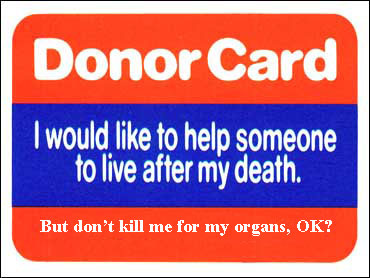‘Nudging’: What Works and Why (Not)?
Earlier this week an impressive cast of academics, policy experts and business leaders gathered in Sydney at the inaugural Behavioural Exchange meeting to talk about “nudges.” (See also: “Drinking For Free at the Behavioral Insights Conference.”)
Made famous by Richard Thaler and Cass Sunstein’s 2008 book, nudges build on almost half a century of work at the intersection of psychology, behavioral economics and policy.
In a nutshell, a nudge is an attempt to make judgements and choices easier – but not in a coercive way.
The pioneers of the approach are the UK Behavioural Insights Team who in conjunction with UK government led by prime minister David Cameron have used nudges to increase the number of organ donors, improve payment rates of fines, and make job-seekers more engaged and involved (among many other things).
Some of these successes have been replicated by the Behavioural Insights Team here in NSW. For example, a study run with the State Debt Recovery Office (SDRO) demonstrated that fine notices which included a prominent “PAY NOW” stamp, and used wording like “you owe” rather than “amount owed” led to significant improvements in payment rates in comparison to a standard letter.

This article by Ben Newell originally appeared at The Conversation, a Social Science Space partner site, under the title “’Nudging’ people towards changing behaviour: what works and why (not)?”
These success stories are encouraging, but they belie an important question that was perhaps not given enough attention at the meeting. Why do some nudges work and others fail?
The standard argument is that nudges work because they make choices simpler by capitalizing on the “boundedly rational” nature of human decision making. But how, exactly, they work and which aspect of the “choice architecture” is simpler, more engaging, or more influential, can be unclear.
PAY NOW or ‘you owe’
For example was it the “PAY NOW” or the “you owe” that changed payment rates? This might not matter. If the goal is to improve the outcome (that is, encourage people to pay a fine on time), then perhaps understanding the process is not so crucial.
From a psychological perspective, however, it is also important to understand the process or the mechanism. For instance, in the SDRO study, a letter that had the words “ACT NOW” instead of “PAY NOW” was not so successful in changing behavior – why not?
We can speculate but we don’t really know. Knowing why is important not just academically, but also from a practical perspective. If we don’t know why a nudge worked in the first place – and then it stops working (e.g., people return to being tardy fine-payers) – we may not know how to get it working again. Not knowing the why also makes it more difficult to generalize nudges to other contexts.
As many of the speakers at the conference acknowledged, a lot of the successful nudges have not been in place long enough to judge their long term success. Again, sometimes this may not matter – if the nudge is a “set and forget” such as changing defaults to become an organ donor, then nudging people to make the “right” choice once is enough. But nudging repetitive behaviors (for example, energy use in the home) is likely to require repeated reminders to avoid relapses or people becoming habituated to the message.
Replication and the danger of file drawers
Via teleconference, Richard Thaler reminded the audience of the key importance of replicating successful nudges – and also of recording and telling people about “failed” nudges.
If we don’t know why a nudge worked in the first place – and then it stops working – we may not know how to get it working again
Psychology has been through a painful period of self-reflection recently due to highly publicized failures-to-replicate. Part of the problem has been a publication bias whereby experiments that “don’t work” get stuck in the file drawer and no one learns from them.
The field of behavioral insights would do well not to fall foul of a file draw problem and to resist the temptation to over-sell the product too soon. It is worth remembering that much of the pioneering work of Daniel Kahneman and Amos Tversky – on which behavioral insights are based – focused on situations when people’s reasoning did not “work.” We learn from errors and failures as much as from successes.
The machinery for doing this replication work is readily available. One of the most important messages of the meeting was emphasizing the use of randomized controlled trials and the need for repeated testing and adaptation.
But these sorts of trials are expensive and time consuming and in some sectors there may not be much appetite for replications with larger samples. Once something “works” there might be a temptation, amongst some, to just “run with it.” It is crucial, however, for the continued success of the field that these replications are done (despite the clear practical challenges), and that failures to replicate are reported.
The enthusiasm for and promise of behavioral insights was very evident over the two days of the conference. The future appears bright for practitioners of “BI”, but as UK’s Behavioural Insights director David Halpern noted in his closing remarks, one needs to be cautious and not get swept up in the rhetoric.
Focusing a little more on the “why” and “why not” questions might just provide the kinds of insights necessary to nudge the field forward.![]()
***
Ben Newell attended Behavioural Exchange 2014 as a guest of the Alfred P. Sloan Foundation. Ben Newell receives funding from the Australian Research Council.




























































































